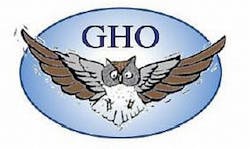IARPA taps D-STAR Engineering to develop ultra-quiet UAV propulsion systems for secret surveillance missions
WRIGHT-PATTERSON AFB, Ohio, 29 July 2012. U.S. intelligence officials are taking the first step toward developing ultra-quiet unmanned aerial vehicles (UAVs) for sensitive surveillance applications in which the sound of a typical UAV propulsion system could give away its presence.
Officials of the U.S. Air Force Research Laboratory (AFRL), on behalf of the U.S. Intelligence Advanced Research Projects Activity (IARPA) Smart Collection Office in Washington, are awarding a $4.8 million contract to D-STAR Engineering Corp. in Shelton, Conn., to develop a quiet UAV propulsion system that generates electrical power quietly from gasoline or diesel fuel to enable purely electrically driven quiet flight.
The contract, awarded on 17 July by officials of the AFRL Wright Research site at Wright-Patterson Air Force Base, Ohio, is part of the IARPA Great Horned Owl (GHO) program that seeks to develop fuel-to-electricity systems that couple advanced combustion engines to alternators or generators, as well as electricity-to-thrust devices that use electric motor propulsion systems.
UAVs have become invaluable tools for military surveillance missions, but sometimes the sounds or infrared signatures of their propulsion systems can alert an enemy to their presence.
IARPA officials issued their formal industry solicitation for the initial 15-month phase of the GHO program last October to develop technologies for quiet, covert UAV flight. The overall GHO program should extend through 2016.
The second phase of the GHO program will involve air vehicle system concept development and testing, while the third phase will involve validation and flight demonstration. The second and third phases will be covered in a separate solicitation. Additional GHO contracts may be awarded.
In the first phase of the GHO program, D-STAR Engineering experts will develop a UAV propulsion system that combines a gasoline or diesel fuel engine, motor, and battery, similar to a hybrid automobile.
The UAV propulsion system's gasoline or diesel engine not only will power the UAV for most of its mission, but also will generate electricity and send it to the system's battery to power the UAV's electric motor for ultra-quiet operations.
D-STAR Engineering officials say their company's engineers have developed some of the world’s smallest and lightest heavy-fuel piston engines and portable power systems. The company has demonstrated technologies for nested core gas turbine engines, and has developed technologies for turbine engines and lift and thrust fans.
D-STAR develops and builds aerospace and defense parts and equipment, and engages in research, design, and development related to automotive, aerospace and propulsion and power systems, company officials say.
For more information contact D-STAR Engineering online at www.dstarengineering.com, or IARPA at www.iarpa.gov.
Follow Military & Aerospace Electronics and Avionics Intelligence news updates on Twitter

